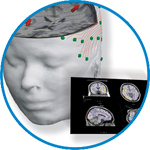- Home
- About ANT
-
Products

asa
asa is a highly flexible EEG/ERP and MEG analysis package with a variety of source reconstruction, signal analysis and MRI processing features.
.jpg)
eego mylab
The new frontier in multimodal brain research. With up to 16 kHz sampling rate, 256 EEG channels and unique software features, eego mylab gives you an unprecedented in-depth understanding of the human brain.

eego sports
eego sports offers complete freedom to collect high-density EEG data, bipolar EMG signals, and a variety of physiological sensor data, wherever and whenever required, with publish quality data in less than 15 minutes!

waveguard net
The waveguard net sets a new standard for research applications requiring high-density EEG data acquisition with quick preparation time, high flexibility, and subject comfort.

visor2
Our new and upgraded visor2 solutions integrate all the latest technologies for navigated rTMS, dual-coil navigation support, EEG-TMS recordings and pre-surgical evaluation for the highest quality in research and clinical procedures.

powerMAG ANT
The PowerMAG ANT 100 rTMS stimulator is designed for the specific needs of high-end TMS applications. Powerful high-frequency TMS as well as high precise single pulse and repetitive pulse protocols are combined in one single device.

xensor
xensor offers the solution for digitization of 3D electrode positions. xensor takes care of the whole procedure; it records, visualizes and stores positions acquired with a dedicated digitizer.

waveguard original
waveguard original is the cap solution for EEG measurements compatible with fMRI, MEG and TMS system. Use of active shielding guarantees performance in even the most demanding environments.

waveguard connect
waveguard connect EEG caps are a perfect match for hospitals and institutes aiming at reliable EEG, maximum uptime and great patient comfort! For optimal signal quality, the electrodes are made of pure, solid tin.

waveguard touch
waveguard touch is a dry electrode EEG cap. The unique Ag/AgCl coated soft polymer electrodes provide stable, research-grade EEG signals while maintaining subject comfort. The combination of these innovative dry electrodes and the industry-leading waveguard cap makes waveguard touch the best solution for dry EEG.

smartmove
smartmove allows planning of a complete TMS session ahead by defining stimulation sites based on anatomical MRI information and functional information like fMRI, PET or EEG/MEG.
Stay - References
- Support
- Events
- News
- Contact Us
You are here
Masking the Auditory Evoked Potential in TMS–EEG: A Comparison of Various Methods
Masking the Auditory Evoked Potential in TMS–EEG: A Comparison of Various Methods
There is growing interest in combining transcranial magnetic stimulation (TMS) with electroencephalography (EEG). Because TMS pulses are accompanied by a clicking sound, it is very likely that part of the response in the EEG consists of an auditory evoked potential (AEP). Different methods have been applied to mask the sound of TMS. However, it is unclear which masking method is most effective in reducing the AEP. In this study we explore the presumed contribution of the AEP to the response and evaluate different ways to mask the TMS clicking sound. Twelve healthy subjects and one completely deaf subject participated in this study. Eight different masking conditions were evaluated in nine hearing subjects. The amplitude of the N100–P180 complex was compared between the different masking conditions. We were not able to completely suppress the N100–P180 when the coil was placed on top of the head. Using an earmuff or exposing the subjects to white or adapted noise caused a small but significant reduction in N100–P180 amplitude, but the largest reduction was achieved when combining a layer of foam, placed between coil and head, with white or adapted noise. The deaf subject also showed a N100–P180 complex. We conclude that both the TMS clicking sound and cortical activation by the magnetic pulse contribute to the N100–P180 amplitude.

 Read more
Read more.jpg)




